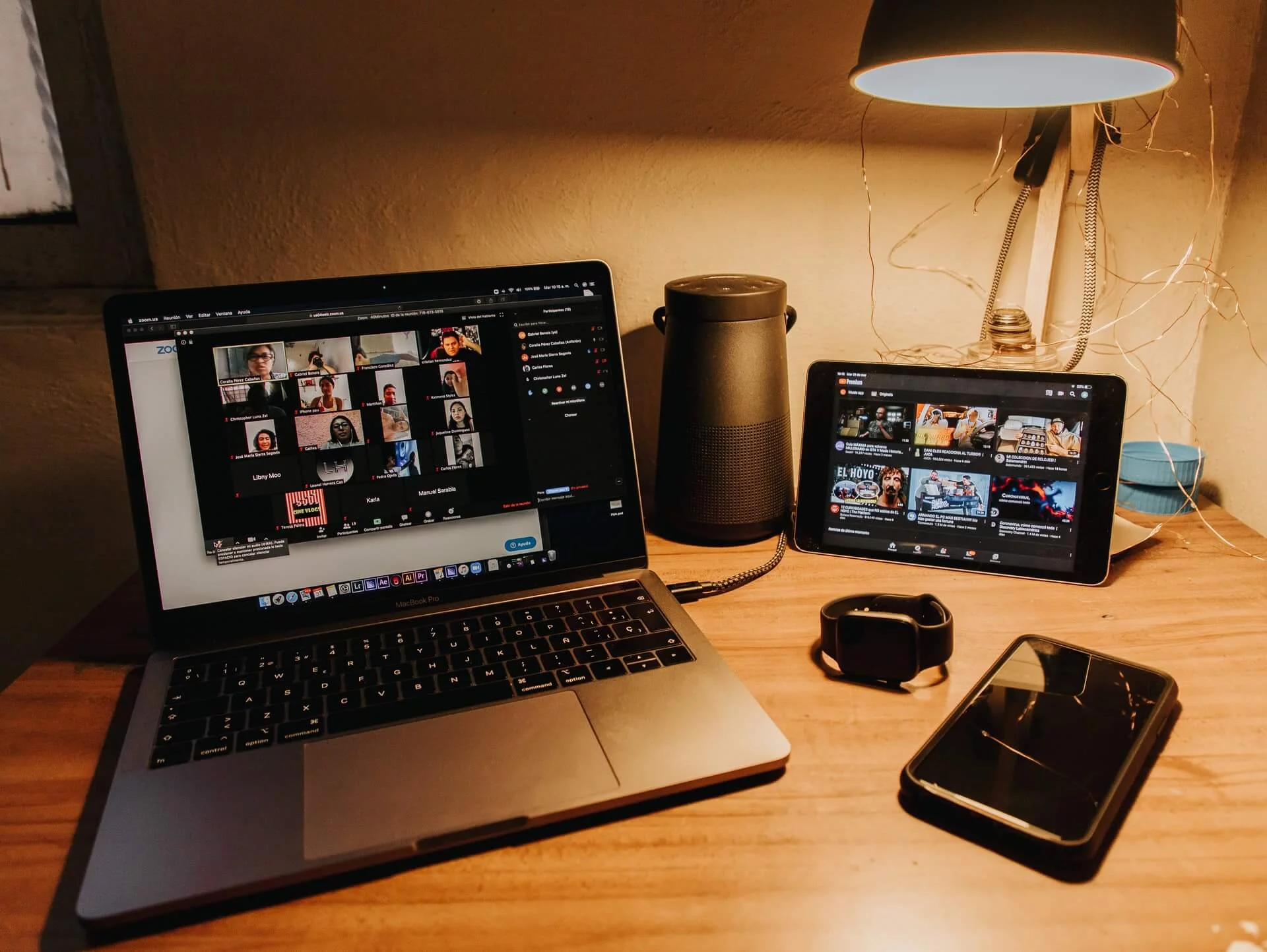
Increasingly, more businesses are shifting their operations into the digital realm. As a result, almost every company has an online variant of remote work.
Video Conferencing is a Valuable Tool
Summarize with
Table of contents
The result is a primarily virtual workforce. But how do business owners, managers, supervisors, and trainers keep tabs on their workers who are at home? What happens whenever there is a team meeting? How do online businesses handle tasks that require interaction within the team?
If these questions have crossed your mind before, you are in the right place. This article focuses on how video conferencing solutions introduce the new look of remote work. Through virtual conferencing, you can interact with your co-workers.
During this unprecedented era of remote work, video conferencing is a valuable tool that businesses may utilize to boost job performance, morale, engagement, and participation, among other things. Here are a few examples of how video conferencing features may help a remote workforce.
But first, let us take a brief look at the advantages of using video conferencing software as you work from the comfort of your home.
Benefits of video conferencing in remote work
Virtual meetings are widely perceived as inferior to in-person meetings, as a stopgap measure until people can get together again or quickly remedy a sluggish situation. Is it, however, time to reconsider the usefulness of virtual meetings? If you’re wondering ‘how does video conferencing work?’, you can learn the basics from a how-to tutorial. Anyway, here’s why business video conferencing is a good solution for remote work:
- Optimizes attendance
- It’s more engaging compared to audio conferencing
- Enhances communication
- Improves project collaboration
- Saves resources: time, money, and effort.
- Strengthens virtual teams through the integration of remote workers
- It helps employees feel connected to the company and co-workers
Top 6 video conferencing features that enhance remote working
1. Compatibility to mobile devices
Participants who join the webinar on their mobile devices will participate in all elements of the event. They can see the presentation and webcam in the same way that desktop guests can.
You can use your smartphone in a secure video conferencing meeting, and other participants won’t even notice the difference. You can access the same features and functions as someone on a PC.
2. Calendar invites and shares
The interface of most video conferencing platforms is typically basic and straightforward. Scheduled webinars or always-on webinars are examples of live events that appear on your calendar. Past and future events are displayed in chronological order, providing a comprehensive overview.
Plus, there’s a webinar room that’s always accessible; you and your guests can join at any moment. The scheduling and sharing feature ensures all staff are kept up to date and never miss any events.
3. Screen share for remote work
A while back, you had to share all documents related to the meeting of your remote work before beginning the virtual conference. Otherwise, you would spend the whole time maneuvering between tabs on the computer.
You might miss vital non-verbal cues. Imagine conducting an appraisal interview, and during the meeting, you need to check the team member’s profile. It would be best if you set the visual tab to do so.
Screen sharing is essential for interactive meetings and webinars for active remote work. For example, the display of your whole screen and specific programs during a conference on your desktop. This makes it easier for participants in your video conference to understand what the presenter is saying.
You may post a clip or report during your webinar in real-time. You simply paste and launch a link or URL, which makes it available to all participants concurrently.

4. Speaker tracking
During a meeting, all eyes are on the speaker. Everyone can observe the speaker’s body language and emotions. Video conferencing systems can monitor who is actively speaking using a sophisticated microphone array, then automatically zoom in on that individual to obtain a better picture of their body language.
When the focus is on the group, everyone gets a smaller version, and the live experience isn’t as good.
5. HD video with moderator controls
The use of high-definition video lets everyone see who is speaking, making it feel as though everyone is in the same room. Moreover, when combined with an in-app moderator, it is easier to oversee the smooth running of the meeting.
During remote work with your team or audience, you can control who speaks, broadcasts video, or shares their screen. You can mute the other attendees’ mics when there’s a speaker. This means the meeting is less disruptive and unlikely to descend into chaos.
6. Noise block
Ever wonder why they ask us to switch off our mobile phones whenever we walk into a meeting? The whole purpose is to avoid interruptions and distractions from incoming calls and text messages.
It so happens that even during virtual meetings, there can be distracting sounds. For instance, typing on their keyboard or going through a stack of papers can cause a significant sound. When the microphone picks it up, it can disrupt the flow of communication.
The best video conferencing systems in the market have some «NoiseBlock» technology (echo cancellation algorithm). This software detects when a person is speaking, and when no speech is detected, it mutes the microphone.
The bottom line
Recently, business video conferencing has become incredibly popular because it helps teams complete projects faster, improves communication, and cuts travel costs. Working together feels completely different with video calls because you can see and hear your teammates clearly, which is especially important when you work from home or practice remote work.
FAQ
Video conferencing becomes a valuable tool in remote work because it allows team members to see and hear each other which enhances engagement and communication. According to the article, it improves project collaboration and helps remote employees feel connected to the company and co-workers.
Mobile device compatibility supports remote teams by allowing participants to join meetings from their smartphones and access the same features and functions as someone on a desktop. The article explains that mobile users in a video conferencing session can see presentations and webcams in the same way as desktop guests.
Calendar invites and sharing features are important in video meetings because they ensure that all staff are kept up to date and never miss events. The article states that scheduled webinars or always-on rooms appear on your calendar and give a comprehensive overview of past and future events.
Screen sharing plays a significant role in enhancing remote meeting effectiveness because it makes it easier for participants to understand what the presenter is saying by showing documents, links or reports in real time during the call. The article highlights that rather than switching tabs, sharing the screen allows everyone to follow along.
Features such as HD video and noise-blocking improve the remote work experience because HD video makes it feel as though everyone is in the same room and noise-blocking reduces distractions from unwanted background sounds or keyboard typing. The article mentions that with HD video and moderator controls you can oversee the meeting more smoothly and with noise suppression the flow of communication is less disrupted.

Thomas settled in Miami after living in six other countries. When he’s not surfing or relaxing with a game of Book of Ra, you can usually find him in his home office sharing his experiences and tips on working remotely and staying productive in any environment.











